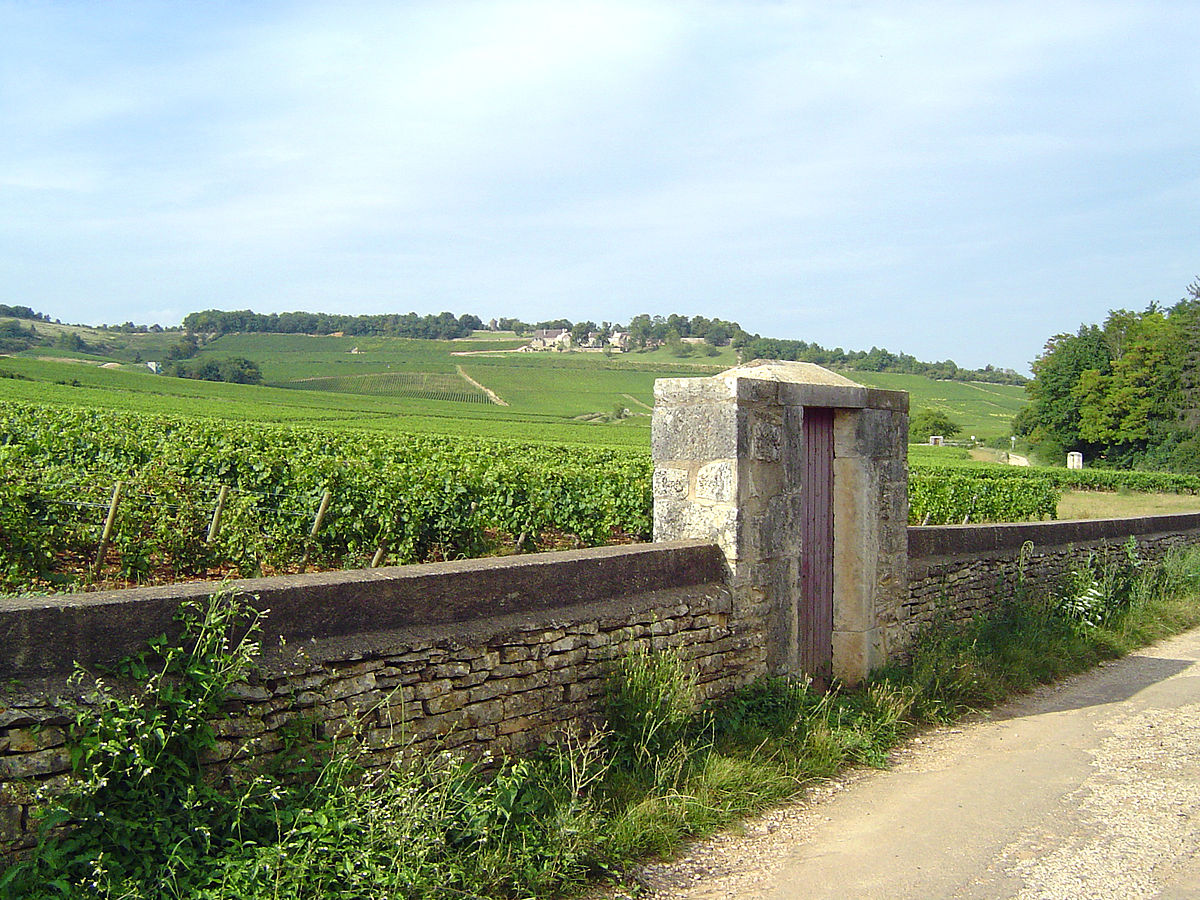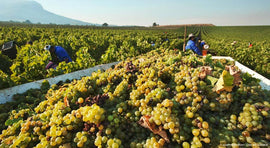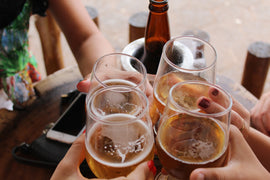Domaine Masse Givry 1er Cru
The French Wine region of Burgundy may be small in size, but its influence is huge in the world of wine. Wine has shaped the region for over 2000 years, and in the heart of Burgundy, in every town and village, wine is at the center of everything. From as early as the third century B.C. Roman winemakers were at work in Burgundy. The people of Augustodunum travelled many miles to plant vines along the south-facing slopes of the Saône River Valley. They produced a highly concentrated beverage seasoned with herbs and sweetened by the addition of honey which could only be drunk if diluted with water.
Fortunately for Burgundy, the church took up where the Romans left off. On the fall of the Roman empire the vines passed into the hands of the abbeys and monasteries established in the region. The monks upheld the vital traditions established by their Roman predecessors. Much wine-making progress was made in the era dominated by the religious brethren. The monks developed and documented essential wine making techniques — care of the vines, skilled pruning, hygiene, adequate alcohol levels — to prevent the wine turning to vinegar en route to the various parts of the order’s wide network of abbeys throughout Europe.
To avoid transporting men and materials over vast distances in Burgundy, and to ensure conservation of the wine, the Cistercians built vinification cellars in the villages alongside the vineyards. Associating the winemaking cellars with the land led to people recognizing the distinctive characteristics of the wines from different parcels and how they tasted differently.
Located in the east-central part of France, Burgundy has 5 primary wine growing areas: Chablis, Côte de Nuits, Côte de Beaune, Côte Chalonnaise, and Mâconnais. The Côte Chalonnaise occupies a slope running south for roughly 15 miles from Chagny, at the foot of the Côte de Beaune, to Montagny, at the top of the Maconnais region. There are five communal appellations in the Côte Chalonnaise; from north to south they are Bouzeron, Rully, Mercurey, Givry, and Montagny. All of the appellations except one, Montagny, which grows white exclusively, produce both red and white wines in varying proportions as you move from one town to the next. The limestone slopes take on a more dispersed character here, and the best vineyards, the 1er Crus (there are no Grand Crus in the Chalonnaise) are broadly located on south-facing, limestone-rich outcrops. Because the vines on the Côte Chalonnaise rise to significantly higher altitudes than those of the Côte d'Or, harvests tend to be later and full ripening of the grapes more variable. But no matter how vast a chasm separates the Côte Chalonnaise from the Côte d’Or, it is still Burgundy, and the potential of its wines is as alluring as their value. The hope is always that for appreciably less money the wines of the Côte Chalonnaise will offer a satisfying taste of Burgundy.
Historically, Côte Chalonnaise has been an important part of wine trading. The Côte Chalonnaise is named after the town of Chalon-sur-Saône, located along the Saône River. Its location made the town an important trading center of the Celts in Gaul. The region was later used by the ancient Romans, with wine being one of the commodities traded up and down the river. Later, in the 18th century, the Canal du Center ran through the Côte Chalonnaise, creating a water route to send wines produced in the south of France to other markets, such as Paris, in the north.
The estate of Domaine Masse is located in the hamlet of Barisey, in the valley of Vaux near Givry. It was founded at the end of the 19th century by Claude Masse, great grandfather of the current proprietor Fabrice Masse. Originally starting with only 2 acres, today Fabrice, along with his father Raymond, and also supported by Roland Masse (his uncle and former manager of the Domaine des Hospices de Beaune), farms 25 acres organically (although not certified). They recently finished a magnificent renovation of the old stone winery and caves to modernize the facilities. The Masse vineyards sit at a slightly higher altitude with moderate temperatures that allow their wines to retain a certain freshness. In 2007, Fabrice was awarded the trophy for the best young talent in Burgundy. He makes wines that faithfully uphold the family’s proud winemaking history and tradition, but he’s also open-minded and creative when it comes to incorporating ideas that lead to healthier vines and better wines.
For vinification of his wines Fabrice does a cold pre-fermentation maceration lasting 5 to 6 days. The alcoholic fermentation lasts about fifteen days, with two daily pumpings without punching down the cap to avoid extracting too much tannin. The must is then pressed gently by means of a pneumatic press. The wine ages for 10 and 12 months in French oak barrels, with a maximum of 15% new barrels.
Blessed with parcels in some of the very best locations in the picturesque villages of Givry and Mercurey, Domaine Masse always seeks to showcase the individual characteristics of each vineyard with each vintage. For this quarter we are presenting three Givry premier cru wines from the Domaine, each displaying the unique characteristics of its terroir. Pinot Noir is the grape of red Burgundy and makes wines that are maddeningly elusive, changing by the minute in the glass. The first sip from a just-opened bottle can be gloriously sweet and fruity, but then the wine seems to close, putting up a tart boundary that fends off efforts to get at the flavors within. Let the wine sit 20 or 30 minutes, and it transforms again. The flavors deepen, with bass notes of chocolate and anise underlying the higher fruit and herbal flavors. This is the great allure of Burgundy, and what keeps the wine drinker on the constant search for that true “Burgundian” experience. These three Givry 1er Cru Pinots from Domaine Masse will work well with duck, game birds, mushroom dishes, pork and poultry. Given their generally softer tannic structure, they can even work with fish and vegetable courses, and these wines can pull a whole table of different entrées together with a reasonable degree of success.
2017 Domaine Masse Givry La Brûlée 1er Cru $29.00
La Brûlée is a vineyard in the desirable northeast portion of Givry. It sits in the upper mid-slope region at 240–280 meters, with favorable exposition and 60-year-old vines. La Brûlée is a very hot parcel as its name indicates. The grapes ripen very well and are always harvested first.
The 2017 La Brûlée has aromas of violets, strawberries, and blackberries with hints of liquorice, game, and spice (cloves). It has nice concentration with just a hint of earthiness to add complexity. It is quite tannic in its early youth, but after 3 to 5 years in the bottle it becomes suppler and fuller.
2017 Domaine Masse Givry En Veau 1er Cru $29.00
En Veau is also located in the desirable northeast portion of Givry. It too sits in the upper mid-slope region and is planted with southeast exposure. The terroir is typical of the appellation, with clay and limestone soils rich in pebbles, which allows for good drainage. The vines are 65 years old, and the fruit from this vineyard typically produces more robust wines. The nose of the 2017 En Veau combines notes of red and black fruits including blackcurrant with a slight oaky touch. The tannins are very supple in the mouth. The wine is medium-bodied, fruity, and aromatic with notes of red berries and blackcurrant, very characteristic of Pinot Noir from Givry. It is a very balanced wine and while pleasant to drink young, will continue to improve over the next 3-5 years.
2016 Domaine Masse Givry Champs Lalot 1er Cru $36.00
Recently upgraded to premier cru status, Champs Lalot was the first parcel (1.25 acres) the Domaine originally purchased. The 1er cru vines are located at a higher altitude and are facing East. Its soil is stony clay and chalk, giving the wine its fine tannins and pure, mineral character.
The 2016 Champs Lalot has beautiful aromatic intensity, with notes of red and black fruits (cherry, raspberry, blackberry, currant), floral notes, spices and vanilla. The mouth is rich with fruit with some savory flavors. The mouthfeel is elegant and slightly oaky with silky tannins. Complexity, harmony and elegance are all united. The finish is supple, long and fruity.





